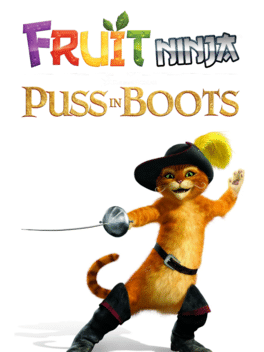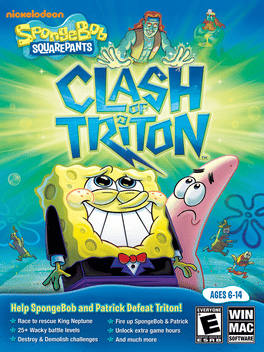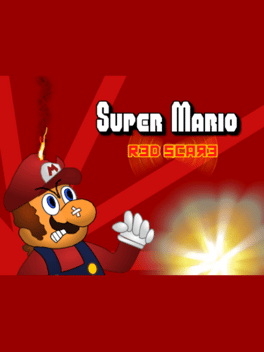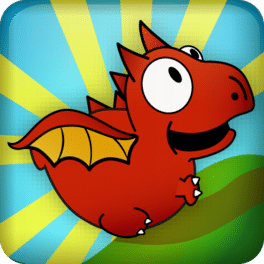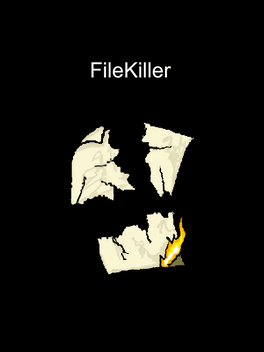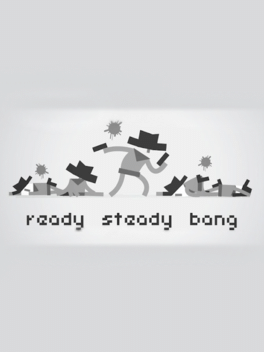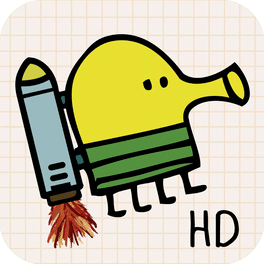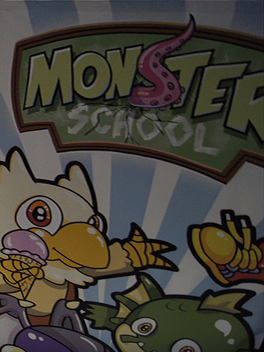New Game Boy Games - Page 141
-
Finger Slayer Seasons
2011
Finger Slayer Seasons is one of the most thrilling and fun reaction time game for Android. Test your reaction time by saving Fingoo from the continuously moving Sharp Saw. Finger Slayer Seasons 2 is a brand new fun edition to the Finger Slayer series. Play this fun exciting new mode in Seasons 2 today, see how your reaction time is! The objective is to drag your finger on the screen, save FINGOO from the dangerous moving SAW which moves in different speeds while completing the puzzle image placed in the background. Be sure to collect as many coins as possible for more fun and points. Remember you have to collect all the pieces of the puzzle to complete the jigsaw. -
Fruit Ninja: Puss in Boots
2011
Welcome to Fruit Ninja: Puss in Boots Free, a delicious taste of the newest game from Halfbrick, the creators of the original iOS smash hit Fruit Ninja! This free download offers a select numbers of challenges from the all-new Bandito mode, where fruit meets fairytales and the path to glory is yours for the taking! Each stage thrusts you into never-seen-before fruit frenzy adventure: Massive fruit from the Giant's castle, precision and timing challenges, all-out fruit onslaughts with new obstacles And for the first time EVER: Throw down against the most-requested addition in Fruit Ninja history - the tomato! Also available is a selection of Stash items to customize your game, unlockable by completing a range of exciting challenges in Bandito mode! Fruit Ninja: Puss in Boots Free is just a taste of the full game, which has been described as "endless fun" and "simply awesome" by millions of Fruit Ninja fans worldwide. Now you can see for yourself what makes this combination of classic fairytales and juicy slicing -
Line Fluffy Diver
2011
Line Fluffy Diver
2011
An endless runner-like "diving" game, where you play as "Fluffy", a baby seal, who wants to find his lost mother. The player has to decide when Fluffy should dive lower into the ocean by tapping and holding on the screen. Once the player lets go off the screen, Fluffy will jump out of the ocean. By using the diving mechanic properly, Fluffy will be able to not just dodge rocky terrain, but also gain speed, and use momentum to fly out of the ocean temporarily. Points increase over time, but the player can also gather more by swimming close to rocks without knocking into them and collecting as many clams as possible. The clams also fill up a power gauge that automatically drains over time. Various powers and stage mechanics can be found, like shields to protect Fluffy for one bump against rocks, magnets to collect clams from afar, a point multiplier, a seagull with a police hat that can carry you across the stage temporarily, and a whale's spray that lets Fluffy jump out of the ocean with ease. The game is over when -
Spongebob Squarepants: Clash of Triton
2011
After being freed by SpongeBob, Triton captures King Neptune and everyone else at the Krusty Krab, and SpongeBob and Patrick try to sneak into the Krusty Krab to free everyone. Triton then transforms Bikini Bottom into Mount Triton and turns all the Krabby Patties into monsters while sending SpongeBob and Patrick down the mountain. During their failed mission they find the tridents of King Neptune and Queen Amphitrite, which gives SpongeBob and Patrick new powers, such as super strength. The two then start climbing the mountain, fighting their way to the summit in hopes of rescuing the captives and defeating Triton. -
Bubble Mix
2011
Bubble Mix
2011
star 4★ ★ ★ ★ Now available on iPad App Store !! ★ ★ ★ ★ The best 3 Bubble Apps for the iPhone AppStore are now available for the Mac Appstore! ★ Bubble Shooter (limited) ★ Bubble Exploded ★ Bubble Remove ★ ★ ★ Bubble Shooter ★ ★ ★ Bubble Shooter s a very funny, fast paced and challenging interactive shooting game that allows you to shoot bubbles to make a cluster of three or more. As long as three or more bubbles of the same color are touching after the player shoots the loaded pointer bubble, it clears the cluster and earns points. Bubble Shooter encourages you to "think" and "strategize" before you shoot in order to clear the board. Each level progressively gets more challenging. The Drop gets faster and additional colored bubbles appear. ★ ★ ★ Bubble Remove ★ ★ ★ How high you can score by removing colored balls from the screen? Tapping on clusters of the same colored ball removes them. The more balls in the cluster, the more points you receive. ★ ★ ★ -
The Adventures of Timmy: Run Kitty Run
2011
The Adventures of Timmy: Run Kitty Run is a side-scrolling platformer game, focused on a boy who must battle a bully to save his true love: Kitty. Join Timmy in a quest to rescue the girl of his dreams in "The Adventures of Timmy." This game offers a story-driven world filled with fast-paced fun and has received recognition from the press. Timmy is not your average kid; he's the coolest you'll ever encounter, especially in his iconic cat suit. His mission is to rescue Kitty, the school's prettiest girl, who has been captured by the school bully, Mitch. Timmy embarks on an imaginative journey to infiltrate Mitch's tree house lair and save Kitty. -
Dragon, Fly!
2011
Dragon, Fly!
2011
As a newly hatched dragon pup you still have too tiny wings to fly. That however is not going to stop you from embarking on your very first adventure. The realms are full of curvy hills. Slide along them and time your touches with precision to build momentum and take off into the sky. Be quick though! Dragon mum is anxious about your whereabouts and has headed out to end your journey and bring you back to the nest. -
FileKiller
2011
FileKiller
2011
A game that doubles as malware, 'FileKiller' is a gauntlet that selects random files from your computer and asks you to delete them one-by-one. After twenty files (of which two are folders) are deleted, you will have won the game. -
Screen Snake
2011
Screen Snake
2011
star 9Screen Snake is a re-make of the classic snake game. But instead of moving the snake in a window, the snake moves across your screen itself, or even from screen to screen. This version includes multiplayer games, highscores, levels, and various little additions that should make the gameplay comfortable and fun. Perfect when you have to wait for your computer to finish something, or if you want to play a game behind the back of your teacher or parent. -
Phone Story
2011
Phone Story
2011
Phone Story is a game for smartphone devices that attempts to provoke a critical reflection on its own technological platform. Under the shiny surface of our electronic gadgets, behind its polished interface, hides the product of a troubling supply chain that stretches across the globe. Phone Story represents this process with four educational games that make the player symbolically complicit in coltan extraction in Congo, outsourced labor in China, e-waste in Pakistan and gadget consumerism in the West. -
Ready Steady Bang
2011
Ready Steady Bang
2011
Ready Steady Bang is a beautifully addictive quick-fire duelling game. Play face-to-face with a friend on a single screen in 2 player mode or pit your trigger finger against 10 of the fastest outlaws and collect a hoard of achievements along the way. Progress through the game to unlock 31 unique cowboy deaths, then show them off in your Kill Gallery. Game Center integration allows you to compete against a world of cowboys and girls. Are you fast enough? -
FallDown
2011
-
Sky High
2011
-
Ninja USA
2011
Ninja USA
2011
America is under attack! Angry balls are attacking from everywhere and everyone, and they are so many. But a Ninja comes to fight! This little guy will use his ninja skills, kunai and shurikens to make his way through the levels and save the country from these annoying balls. He has to shoot the falling balls until they disappear, and make sure one never hits him. Created with amazing colorful graphics, Ninja USA is sure to bring you a lot of fun. -
Atari Flashback 3
2011
Atari Flashback 3
2011
The Atari Flashback 3 was manufactured by AtGames, and was released in September 2011. The Flashback 3 includes 60 built-in Atari 2600 games, 2 joysticks, and a case design that is similar to the Flashback 2. Unlike its predecessors, the Flashback 3 uses emulation. -
Street Karate Fighter
2011
Developed to remember how the old style gameplay was more funny and important than the new generation 3D graphic. It is a great 2D fight game with an incredible gameplay in only few megabytes. -
Doodle Jump HD
2011
Doodle Jump HD
2011
BE WARNED: Insanely addictive! "possibly the best iPhone game ever created" - Touch Arcade From prime-time sitcoms (BIG BANG THEORY) to late night TV (JIMMY FALLON) to a fashion accessory for pop stars (LADY GAGA), Doodle Jump is EVERYWHERE! It's a cultural craze, a hot new trend! The iPad version brings you all that you love in the original iPhone game with brilliantly rendered full screen iPad graphics, lush environments, and AWESOME iPad-only features including a special multiplayer racetrack theme! ********************************************* In Doodle Jump, you guide Doodle the Doodler—using some of the most subtle and accurate tilt controls in existence—on a springy journey up, up, up a sheet of graph paper, picking up jet packs, avoiding black holes, and blasting baddies with nose balls along the way. Laugh with delight as Doodle™ blows past other players' actual score markers scribbled in the margins. And be warned: this game is insanely addictive. FEATURES: - 12 incredible worlds + S -
Gensou Rouman Kikou: Phantasmagoria Trues
2011
Gensou Rouman Kikou―Phantasmagoria Trues― ("Fantasy Romance Travel Log") is a Touhou fan game made by Len in Danmakufu. It is a remake of his earlier game Phantasm Romance, containing an overhauled game system, three game modes, and an extra stage. The game spans six regular areas as well as three "unseen" areas which the player must unlock via special means. In addition to this, the game also contains a Terminus area which serves as a counterpart to the Extra stage in the main Touhou series. The game's system revolves around a combination of factors, including a multiplier that is increased by items, bonuses caused by grazing, and a hyper system that duplicates point items and allows the player to cancel bullets into items. There is also a "simple" mode that works like Phantasm Romance, with the multiplier, graze and hyper system removed. -
Monster School
2011

